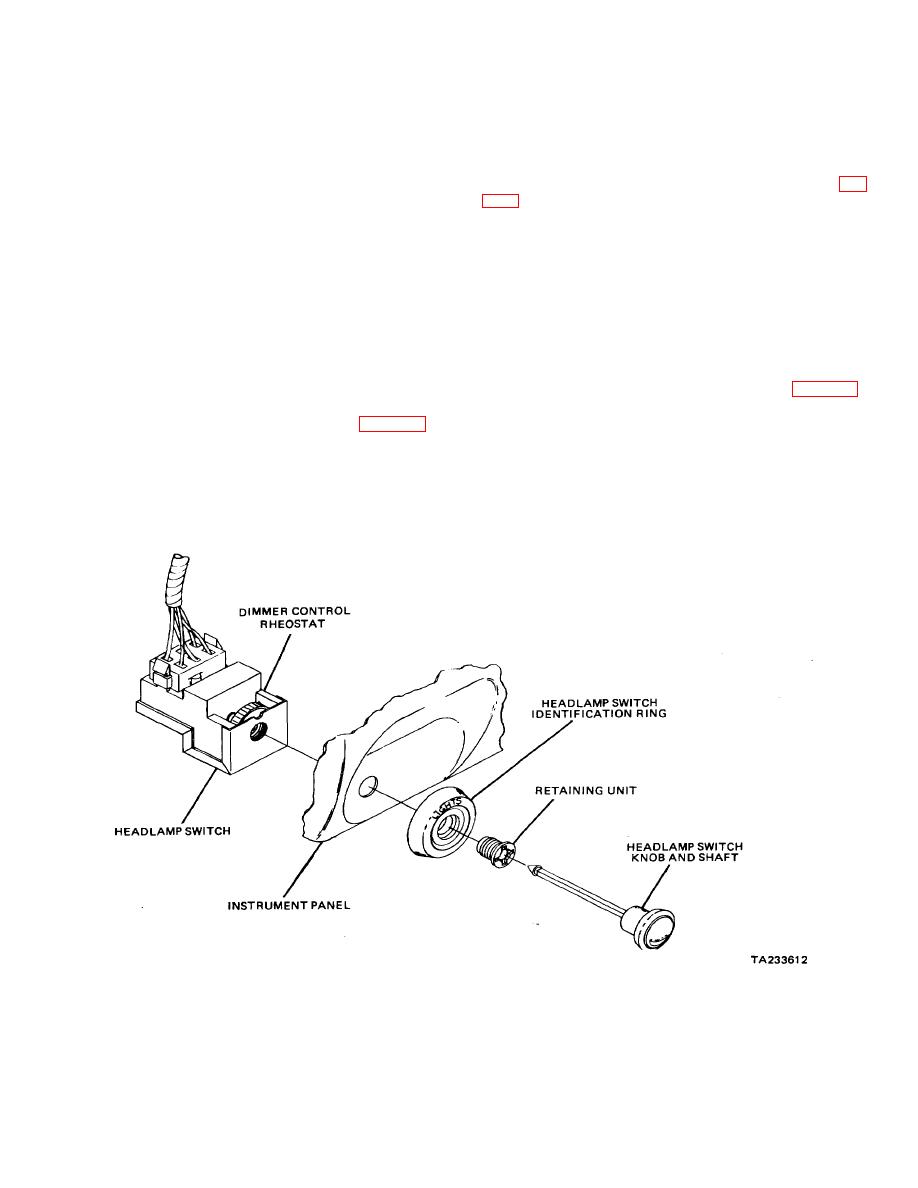
| Tweet |

Custom Search
|
|

|
||
 TM 9-8000
an upper beam to provide enough light in front of the
of the instrument lamps. The rheostat is controlled by
vehicle while driving, and a depressed beam to avoid
turning the knob.
dangerous glare under normal conditions of passing.
The driver is responsible for selecting the proper beam.
(2) The current trend in the design of headlight
The maximum and minimum intensity at important points
switches integrate them with the turn signal switch (fig.
of both beams are definitely specified and can be
checked with the light intensity or foot- candle meter.
end of the turn signal lever. The turning of the knob to
the first on position turns on the tail, park, and instrument
lamps. Moving it to the second position also will turn on
16-7. Headlamp Control Systems. Two headlamp
the headlights.
With this switch configuration, the
controls usually are provided: one to turn them on and
intensity of the instrument lamps usually is controlled by
off, and the other to select between the upper and the
a separate rheostat that is mounted on the Instrument
depressed beams.
panel.
a. Control Switch. The control switch is usually a
(3) Military vehicles that are used in tactical
master-type switch controlling the head, tail, parking, and
situations are equipped with a headlight switch that is
instrument lights.
integrated with the blackout lighting switch (fig. 16-9).
An important feature of this switch is that it reduces the
(1) One type of headlight switch is a push pull
possibility of accidentally turning on the lights in a
type that mounts on the instrument panel (fig. 16-7).
blackout. With the main switch off, no lights are on. It
When the switch is pulled outward it will have two on
can be turned to the left, without operating the
positions. The first on position will turn on the tail and
mechanical switch, to get blackout marker lights
parking lights. Pulling the switch out to the second on
(including blackout taillights and stop lights), and black-
position will turn on the headlights in addition to the lights
turned on at the first on position. This type of switch also
has a control rheostat built into it to control the intensity
Figure 16-7. Instrument-Mounted Headlamp Switch.
16-7
|
||
 |
||